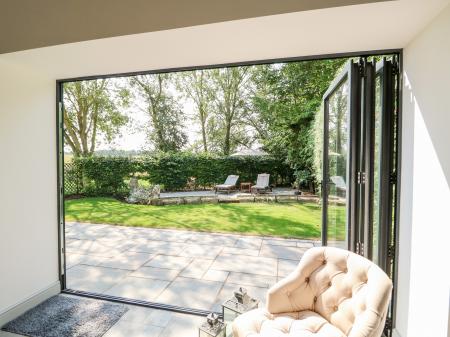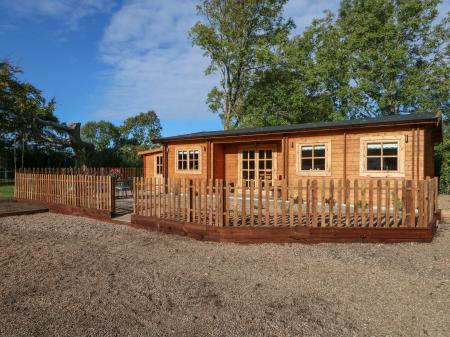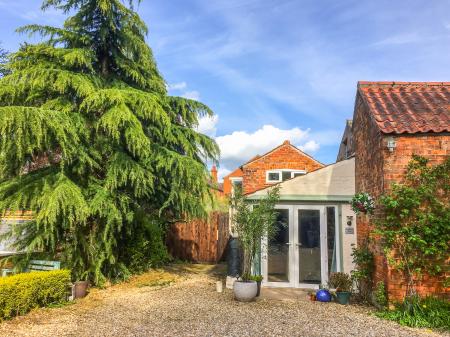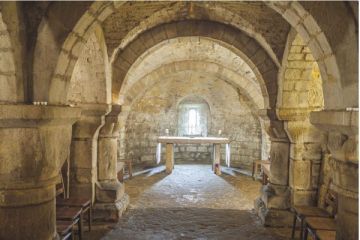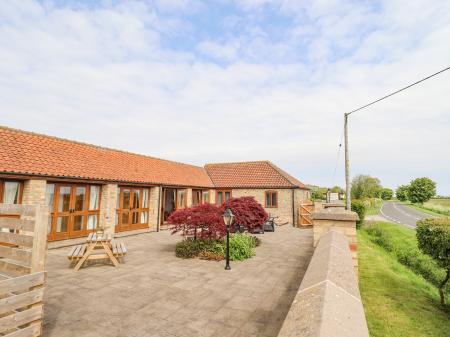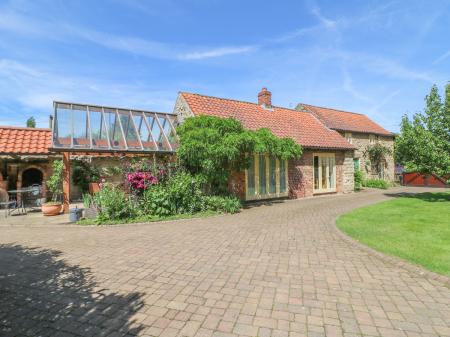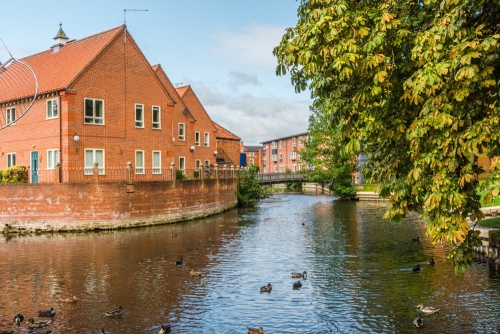
St Denys Church
Sleaford's parish church was begun around AD 1180, but there was almost certainly a church on the site since the late 11th century. The broach spire was added in 1200, making it one of the oldest such spires in England.
Inside the church, the oldest historic features are the 14th-century nave, aisles, and north transept. Other highlights include a 15th-century rood screen and a communion rail thought to have been designed by Sir Christopher Wren. Look for the ornate memorials of the Carre family, lords of the manor throughout the 17th century.
To the north of the churchyard is the Vicarage, one of the oldest buildings in Sleaford, with a timber-framed main block built in the 15th century.

In the market place is the Sessions House, where the Magistrate's Court met. The building was designed by London architect H.E. Kendall in 1831. Also in the market place is the Bristol Memorial Fountain, built in 1874 by Charles Kirk in honour of Frederick Hervey, 2nd Marquis of Bristol, lord of the manor of Sleaford.
A much earlier lord of the manor was Charles Carre, who in 1636 established the almshouses known as Carre's Hospital on the corner of Eastgate and Carre streets, to provide housing for a dozen local men.
Cogglesford Mill
Another heritage treasure is Cogglesford Mill, on the eastern edge of the town. The mill dates to around 1750, though it seems likely there was a mill on this spot since the Saxon period. The mill is restored to working order and is operated by the North Kesteven District Council, who host regular events days where you can watch grain being ground in the traditional way and purchase fresh flour.
On South Gate is the Bull and Dog pub, built in 1689. The Bull and Dog has reputedly the oldest pub sign in England, featuring a scene of bull-baiting - a subject also thought to be unique in the country.

Sleaford Castle
Almost nothing remains of this medieval stronghold beyond a low section of crumbling wall. Sleaford Castle was begun around 1123 by Bishop Alexander of Lincoln and was used primarily to administer the Bishop's estates.
The only real moment when Sleaford Castle entered the spotlight of history was in October 1216. King John, fresh from losing his baggage train and royal jewels in his ill-advised crossing of The Wash, stayed at Sleaford Castle overnight. The king would only live a few more days after leaving Sleaford.
The castle was maintained throughout the medieval period but fell into decay in the 16th century. The only easily visible remnant is now a bit of wall in the north-east corner of the inner bailey.
Money's Mill
One of the most distinctive buildings in Sleaford is Money's Mill, a six-storey tower mill built sometime prior to 1798 beside the Slea Navigation canal. The Grade-II listed mill had four sails and stayed in operation until the 1890s. It was used for a time by the local tourist information office, then the near-derelict mill was rescued from decay in 2007 and restored as a popular cafe. It now stands rather oddly in the middle of a parking area.

Handley Memorial
Modelled after the medieval Eleanor Crosses erected by Edward I is this exuberant piece of Victorian architecture, a striking tower commemorating the local MP, Henry Handley, who died in 1846. Handley was a successful entrepreneur, involved in the Slea Navigation project.
Curiously, it was not erected to commemorate his death, but rather it was begun as a mark of respect after Handley resigned his post in Parliament in 1841. At the base is a standing figure of Handley by sculptor John Thomas, set under a crocketed canopy.
Sleaford Museum
Perhaps the best place to learn about Sleaford and its heritage is at the Sleaford Museum on South Gate. This small museum is full of artefacts reflecting Sleaford's heritage, with regular special exhibits looking at things like Sleaford pubs and inns, the Rauceby Hospital, and the story of Lee & Green's ginger beer. When we visited there was a display of Roman finds in the area, including a 2nd-century coin and a brooch in the shape of a wild boar.

Navigation House Visitor Centre
The story of Sleaford will forever be linked to the building of the Sleaford Navigation, a canal system linking the River Slea with the River Witham. The Sleaford Navigation wharf area was once a bustling commercial area. One of the oldest buildings on the site is the original Sleaford Navigation Company Office, built in 1838.
This Grade II listed building is thought to be the only one of its kind still in existence and has now been converted into a fascinating museum showing how the River Slea was developed and the impact the Sleaford Navigation had on the town's history. Learn about trade on the canal and see the restored Victorian company offices with its original weighing scales. Here's more on Navigation House.
National Centre for Craft and Design
Literally overshadowing Navigation House and the wharf area is this modern art centre, providing the largest exhibition space in England devoted to craft and design. The National Centre for Craft and Design (NCCD) has teaching areas and design workshops but for most people, the main attraction will be the large exhibition areas on the upper floors.
Here you can see art installations in a variety of styles and using a wide variety of media. Admission to the exhibition areas is free. The Centre is housed in a former seed warehouse built in 1939 for the Hubbard and Phillips Company.
One of the best ways to explore Sleaford is to follow the Sleaford Riverside Heritage Trail. The trail links historic sites on and near the River Slea, such as the old Roberts Brewery building on East Bank, and Lollycocks Field, a 5.5-acre nature reserve once used for farming turkeys (lollycocks).





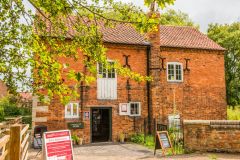




 We've 'tagged' this attraction information to help you find related historic attractions and learn more about major time periods mentioned.
We've 'tagged' this attraction information to help you find related historic attractions and learn more about major time periods mentioned.